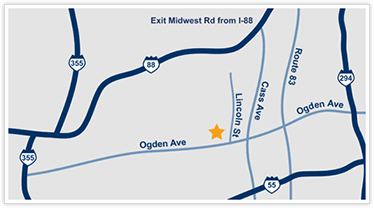What is the Biggest Dollar Bill?
The history of the American dollar is as fascinating as the country itself. Over the years, there have been several unique and intriguing bills minted. Some of them have only had short circulation times, while others have stayed around a little longer. There are also several different bills currently in circulation, some of which may surprise you. Americash Jewelry and Coin Buyers has all the information you need about our national currency.
Early Bills in American History

The history of money in the United States dates back to the country’s formation. The early money used in the new American colonies and the young nation did not look anything like it does today. For one thing, early currency was larger and normally handwritten. Bills also looked different depending on who used them. The money used by the military looked different from that used by everyday citizens, for instance. Some bills had specific features, such as the notation of independence and strength. The creation of the Continental Congress also brought about its own money.
Although they’re considered collectibles today, $2 bills were regular money when they were first printed in 1776, nine days before the United States became an official country. At the time, they were known as bills of credit and were ostensibly for the purchase of items for national defense.
The U.S. government formed the first bank of the United States fifteen years after the country won independence from England. It circulated paper money used to pay back debts from the Revolutionary War. Alexander Hamilton created the bank when he was President Washington’s first Secretary of the Treasury.
Unique Bills in History
America has created several unique bills during its 247-year history:
- The $1 silver certificate was the only currency ever featuring a woman on it. It had a picture of Martha Washington on the front.
- The $2 bill is unique because it’s had the longest run in circulation. They were printed continuously from their creation in 1776 until 2017, except for ten years between 1966 and 1976. They are now only printed sporadically. However, even though they are legal tender, they are considered a rarity as the general public does not see them often.
- One of the largest bills ever printed was the $500 bill. They are still considered legal currency, but they haven’t been printed since 1969.
Largest Bill Ever Printed
Although the highest denomination in current circulation is $100, the government has issued much larger ones. President Woodrow Wilson once graced the front of the $100,000 bill. However, it was never printed on paper; it came as a gold certificate. This might be one of the most unique printings by the mint because it was never intended for public use. The mint created them for banks to move money around during the Great Depression. They are illegal for private collectors to possess. However, the public can view them in a few different locations to learn about the history of money.
Unlike the $100,000 gold certificate, there was a time when the mint would produce $10,000 bills for public use featuring Salmon Chase. It had a pretty good run at the mint between 1918 and 1969. However, since they were rarely used because of the amount of money involved, the mint stopped printing them on July 14, 1969. That was the last day of printing for another large note: the $5,000 bill. Since then, only a few hundred examples of both high values have been authenticated.
The $5,000 note features a picture of President James Madison. President Nixon removed it from circulation over fears that criminals would use it to prey on the then-vulnerable economy. Illegal laundering schemes were also a serious cause for concern.
The fourth high-value bill shut down by the mint was the $1,000 bill , which initially featured Alexander Hamilton. However, since Hamilton appeared on multiple denominations, President Grover Cleveland replaced him on the bill in 1928.
The final bill to cease printing in 1969 was the $500 bill. Unlike the others, it’s still considered legal tender today. However, it’s rarely seen or used. Its rare usage was the reason the mint stopped printing it. The note features President William McKinley and it was last printed in 1945.
Current Denominations
If you walked into one of the federal mints today, there are several bills you might see in production at any given time. Current denominations in circulation range from $1 to $100 in paper money. The mint also creates quarters, dimes, nickels, and pennies in coins. It may surprise you, but making money costs money. It costs about seven cents to make a dollar bill. The costs go up from there depending on the currency and the amount of printing needed. The most expensive paper note to print is $100, which costs seventeen cents per bill.
The Federal Reserve Board determines the amount of money printed each year. This specially selected group has to balance the need for certain types of money and the circulation of the bills already in use. There are no orders for $2 bills this year, but they have not been withdrawn. The Federal Reserve occasionally orders them to meet demand.
The $1 bill is usually printed in the greatest numbers. Nearly 4.4 billion may be produced this year. The $5 bill is also printed regularly and between 685 million and 1.3 billion of them are expected to enter circulation in 2023. The Federal Reserve has also placed orders for $10, $20, $50, and $100 bills to meet demand.
Do you have some intriguing bills in your possession that you would like more information on? Stop by Americash Jewelry and Coin Buyer for our staff to review them. We serve the western suburbs of Chicago and the surrounding communities, and our trained eyes can help you answer any specific questions about your currency. We can also answer any other questions you have concerning your jewelry, coins, watches, silver, and collectibles.
US Dollars by Avinash Kumar is licensed with Unsplash License



